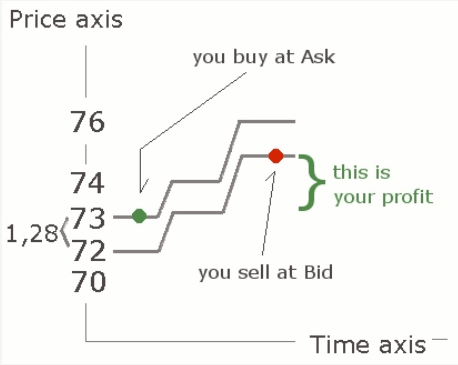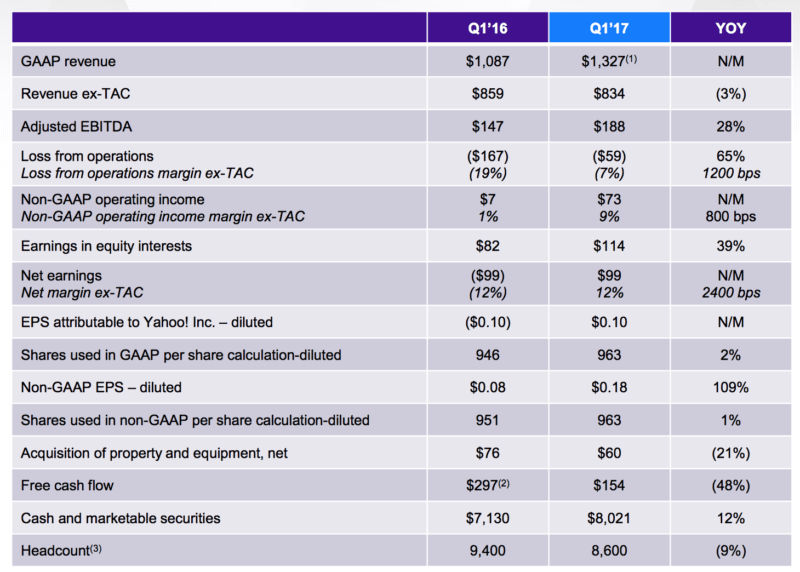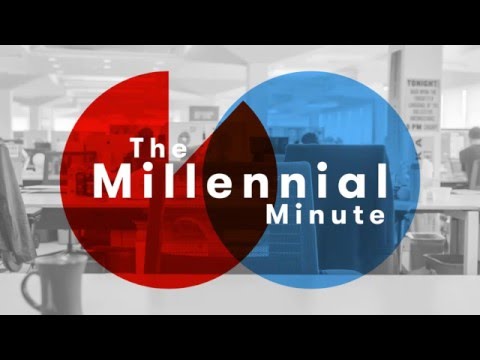Contents
For the latest updates, news blogs, and articles related to micro, small and medium businesses , business tips, income tax, GST, salary, and accounting. Human resource management refers to the recruitment, training and development process of workers to enhance their skills and expertise level. Understand the linking and dependence of various activities involved in the business activity. The majority of the products are sold in their own stores or in the licensed stores only.
Another competitor is taking the services of multiple vendors according to their performance in different regions and is offering competitive advantages to the highest-performing vendor. The major activities of Michael Porter’s worth chain are inbound logistics, operations, outbound logistics, marketing and sales, and repair. The objective of the 5 units of actions is to create value that exceeds the concept of value chain analysis is contributed by the cost of conducting that activity, therefore generating the next revenue. However, once competition became the central focus, finding competitive advantage and, best of all, sustainable competitive advantage became the next critical step. The search for sources of cost and/or differentiation advantage meant that what companies actually did needed to be looked at in close detail.

Only then would it be possible to transmit dynamic yet codified information or to engage in intense interaction . When qualified suppliers aren’t available, leading companies must either internalise the job or outsource it to suppliers they can closely track and manage . In GVCs, more complex transactions necessitate more interaction among actors and, as a result, more robust forms of governance than simple price-based markets. As a result, complex transactions would almost certainly be aligned with one of the three network governance trends or incorporated within a single firm . A value-chain analysis is carried out by examining the detailed processes involved in each phase of a company’s operations.
EXHIBIT 1. THE VALUE CHAIN
Customers are becoming vocal-like never before, and hence it is important even for the top fashion houses to invest in the value chain analysis. It helps improve the status of products or services taken positively by the customers. Porter, identified for Porter’s 5 forces, laid out his methodology of analyzing value chains in his 1985 e-book Competitive Advantage. Porter sought to outline a company’s aggressive benefit noting that it stems from a company’s processes, such as advertising and supporting actions.
CCS succeeded with a differentiation strategy, which is usually very difficult to accomplish in a commodity-type business. Two different groups of customers—food and beverage canners— accounted for 80 per cent of the metal containers produced. Tandem Computers eliminated its costs of purchase orders, invoicing and other functions by jointly developing a detailed bar code process with its suppliers. By improving its upstream design and engineering processes for the Taurus,Ford saved on downstream production and customer service costs.

All companies make decisions that have an effect on their competitive position and profitability. Strategic planning is the organizational course of of constructing these necessary choices. The concept of the supply chain originated from operational management textbooks, whereas the value chain concept comes from practical business management concepts. The distinction between a value chain and a supply chain is that the supply chain doesn’t have any added value. Everything in the supply chain is a conveyance, which refers to a commodity transferred from one business to the other, while the main function of the value chain is to add value to the commodity.
The concept of value chain helps to understand and segregate the useful and wasteful activities accompanying each step during the product development process. Moreover, it also explains that if value is added during each step, the overall value of the product gets enhanced thus helping in achieving greater profit margins. This includes departments like management, finance, legal, etc., which are required to keep the company’s stores operational. Starbucks’ well-designed and pleasing stores are complemented with good customer service provided. It is difficult to discover what one’s role and prospects are at GVCs, which are large, organised, and diverse. In developing countries, a small business, its manager, and local officials should all be cognizant of their capacities in relation to other local and global players in the chains they want to be a part of or already are.
In most modular supply chains, manufacturers produce products or offer services according to a customer’s requirements. In modular supply chains, suppliers are more likely to take full responsibility for process technology and to use common equipment to spread investments over a large customer base. Even though buyer-supplier interactions can be extremely complex, this keeps switching costs low and transaction-specific investments to a minimum. The primary activities are sales, operations, inbound and outbound logistics, marketing, service functions, etc.
Statements on Management Accounting
This used the idea that a firm is a series of functions (eg R&D, manufacturing, marketing, etc) and that insights could be gained by analysing how each was performed relative to competitors. However, this earlier work, Porter suggested, had remained at the broad functional level. It did not break down each function into its individual constituent activities – the key step in distinguishing between types of activity and their interrelationships.

Activities that encourage a long-term relationship with customers who have purchased a product or service, including customer service and product support. Operations is the stage at which the raw materials are turned into the final product. At the end of the process, customers can enjoy high-quality products at lower costs. In doing so, businesses can determine where the best value lies with customers, and expand or improve said value, resulting in either cost savings or enhanced production. Five forces model, has been an instrument used by several companies to create and hold on to significant competitive advantages. Service – includes all the activities required to keep the product or service working effectively for the buyer after it is sold and delivered.
Drawbacks of Value Chain Analysis
For businesses that lack a dedicated team for the supply chain, Fashion is the ideal solution provider. Both value chain and supply chain have common goals but adopt a different methodology. Both concepts aim to satisfy the customers with affordable and stylish products while keeping their operations smooth and efficient at all times. In other words, if they’re run efficiently the value obtained ought to exceed the prices of operating them i.e. customers should return to the organisation and transact freely and willingly. The worth chain also known as Porter’s Value Chain Analysis is a business administration concept that was developed by Michael Porter. In his book Competitive Advantage ,Michael Porter explains Value Chain Analysis; that a worth chain is a set of actions which might be performed by an organization to create worth for its customers.
It is the concept of detecting and analyzing the primary and support activities adding value to the final product. The value chain analysis aims to reduce the costs of making effective products without compromising the quality. It represents the total internal activities of any business while transforming the input into output. The main actions within Michael Porter’s worth chain are used to offer a company with a competitive advantage in any one of many five actions so it has an advantage within the business during which it operates. But virtually any firm can use the value chain analysis laid out by Porter even if they don’t have all of the components.
Analysis of the value chain allowed the separation of the particular underlying activities that firms employ to design, produce, market and distribute their products or services. Porter contended that it was these underlying activities that contained the seeds of competitive advantage. By examining them in an integrated way, new but practical perspectives on competitive strategy would be found.
- As sources of competitive advantage, these rela- tionships or linkages among activities can be as important as the activities themselves.
- The recent devaluation of the Mexican peso is an example of the risks of moving operations to uncertain economies.
- The supply chain is a core part of any business’s success, especially in the fashion industry.
- Because vertical linkages can be complex and intangible, they are often overlooked by organizations.
- Firms must not overlook value chain linkages among interdependent activities that may impact their total cost.
- Lastly, businesses should identify differentiation that can be maintained and adds the most value.
It can be extremely difficult to obtain pertinent information for these measures,including operating costs, revenues and assets for each process through- out the industry’s value chain. However, this information is necessary to calculate a rate of return on assets for each value chain process. ●identify the industry’s value chain and assign costs, revenues and assets to value-creating processes; ●diagnose the cost drivers for each value-creating process; and ●evaluate the opportunities for sustainable competitive advantage.
Primary activities include the following
For long-term cost estimation, full costs should be used rather than marginal, variable or incremental costs. Vertical linkage can reveal which activities are the most critical to competitive advantage . For example, Swiss watchmakers succeeded for years as relatively small,labor-intensive assemblers. The Swiss responded by restructuring their industry to gain economies of scale similar to those enjoyed by their new global competitors. And sustaining a competitive advan- tage requires that a firm understand the entire value delivery system, not just the portion of the value chain in which it participates. For a firm to achieve superior differentiation, it must utilize the best mix of resources in creating value for its customers.
Three Steps in Value Chain Analysis
Value chain analysis is undertaken in order to understand the behaviour of costs and the sources of differentiation . Porter argued that a business can develop a supportable competitive advantage based on cost, differentiation, or both. Determine the portion of the total cost of the product or service attributable to each value-creating process. The next https://1investing.in/ step of internal cost analysis is to trace or assign costs and assets to each value-creating process identified. Although firms maintain internal reports and cost accounting information, this information may not align with their processes. Companies might have to reclassify their data or conduct cost studies to assign costs and assets to each process.
After you could have accomplished the value chain evaluation you will need to decide what activities are to be optimized in order to create added worth. This is about quantitative and qualitative investments that can ultimately contribute to rising your buyer base, competitive advantage and profitability. Creating enterprise instances will allow you to give priority and return on funding to the possibly required added value creation of a main or assist activity. The SCOR framework has been adopted by tons of of companies in addition to national entities as a regular for business excellence, and the U.S. Department of Defense has adopted the newly launched Design-Chain Operations Reference framework for product design as a regular to use for managing their development processes.